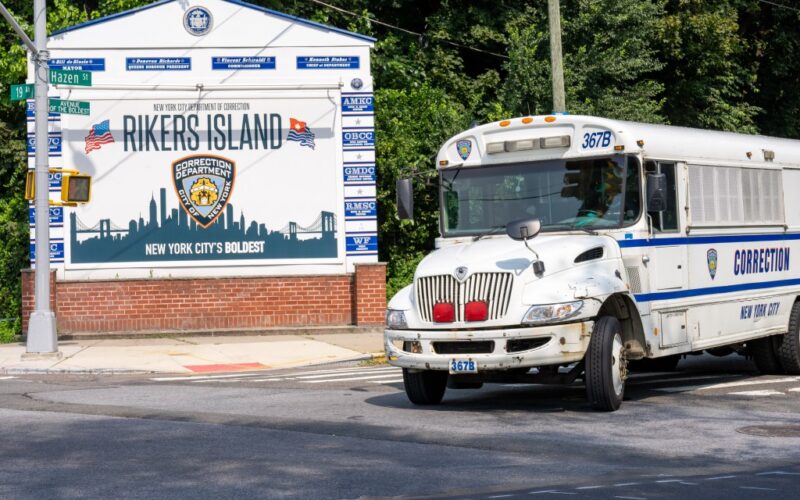As extreme heat ravages New York City this summer, the lives of thousands detained on Rikers Island hang in the balance. Last month, at a Board of Correction (BOC) meeting, the Department of Correction (DOC) sought for the fourth time permission to cram more people into dormitories already at full capacity.
Since November 2024, DOC has operated under a temporary variance allowing it to exceed BOC’s minimum standard capacity limits, citing an “urgent” rise in the jail population. But this crisis is not incidental; it’s been exacerbated by the state prison system’s failure to transfer state-sentenced individuals following a wildcat strike this winter.
In its May request to extend this variance, DOC claimed it had taken steps to reduce the population. The only example? A request to the state Commission of Correction to reopen the Anna M. Kross Center (AMKC) — a facility shuttered in 2023 due to severe infrastructure failures. The state rightly denied the request.
AMKC should no longer be under DOC control, as it was designated for transfer under the Renewable Rikers Act’s sustainability mandate. Public records reveal that between 2017 and 2023, AMKC was the subject of 157 environmental grievances, including sewage flooding, toxic air, and vermin infestations. Proposing to repopulate such a hazardous facility — especially one DOC is not legally entitled to operate — is not a solution. It is a reckless attempt to normalize harm.
As longtime BOC member and former Rikers medical director Dr. Robert Cohen bluntly stated, “Rikers Island is a hellhole… it’s dangerous to all those who work and live there.”
Despite BOC’s order to reduce overcrowding by July 8, DOC returned with no progress — just another request to extend the variance and prolong the suffering on Rikers.
The human cost of this bureaucratic apathy is staggering. Since January, the city jail population has surged by more than 1,000 people, and nine individuals have died in DOC custody. Overcrowded dorms fuel violence, worsen breathing issues, heighten the spread of infection, and turn extreme heat into a deadly threat. The recent, tragic passings of Benjamin Kelly, James Maldonado, Christian Collado, and now another man — all in one month — are not isolated incidents. They are symptoms of a system in freefall.
Thankfully, this time the BOC stood its ground and refused to rubber-stamp another variance request, an overdue act of resolve.
Let’s be clear: this overcrowding crisis is not inevitable. It is the result of policy decisions and a refusal to use proven tools to reduce the jail population. Chief among these is the 6A early release program, which allows individuals sentenced to less than a year on Rikers to serve the remainder of their time at home, supported by re-entry programs and regular supervision.
The program works. In March 2020, as COVID-19 spread through New York City and its jails, DOC used 6A to release around 300 people in a single month. The outcomes were striking: fewer than 1% were rearrested for violent felonies, and only 5% for any felony — far outperforming Rikers’ average recidivism rate. Yet despite its success and the BOC’s directive to expand its use, DOC has released just two people under 6A in the past two months.
Rather than use the tools it has, DOC has relied on a cycle of temporary variances, trying to turn emergency exceptions into a permanent workaround for chronic mismanagement. But variances are meant to be rare and temporary, not a substitute for compliance. Renewing them without progress undermines the very purpose of the standards and risks normalizing unsafe, unlawful jail conditions.
With the latest denial, DOC is now out of compliance with city regulations. The Board faces a stark choice: enforce its standards and demand reform, or enable a system that treats incarcerated people as disposable. The answer should be obvious.
New Yorkers must demand that all members of this crucial oversight body commit to real accountability, and that DOC and the mayoral administration stop stalling and start investing in meaningful alternatives to incarceration.
This means ending reliance on variances that entrench dangerous, unlawful conditions and expanding the use of proven tools like 6A. Only then can we break the cycle of overcrowding, neglect, and preventable tragedy on Rikers Island.
Mack is a survivor of Rikers and co-director of Freedom Agenda. Gilbert is an environmental justice legal fellow at New York Lawyers for the Public Interest. Both organizations are members of the Campaign to Close Rikers.








